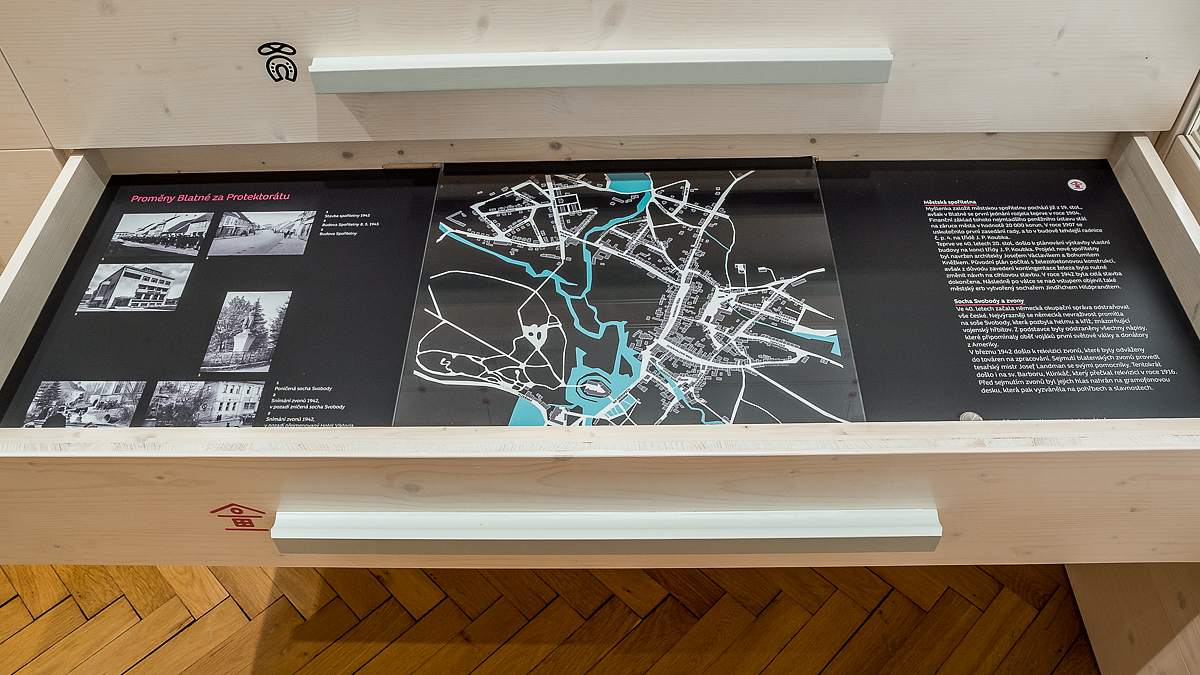PROTECTORATE IN BLATNÁ
1938 marked the beginning of the disintegration of Czechoslovakia. First, the Munich Agreement was signed on 30 September, forcing Czechoslovakia to surrender its border regions. Subsequently, on 15 March 1939, the Germans started to take control of the entire country on the pretext of protection. The Protectorate of Bohemia and Moravia was established.
When the Germans first arrived in Blatná, all over the town they put up posters reading “Niemand darf hunger – Nobody shall starve”. They set up a field kitchen on J. P. Koubka Street and started handing out some sort of soup. Many people flocked in to get something for free. These people were being photographed and then used for a propaganda defending the occupation of a ‘starving’ Czechoslovakia. Not far from there stood the elderly couple Mr. and Mrs. Simandl, who were not very affluent. When the lady was about to step out of the house to get food from the Germans, Jóža Simandl stopped her with an angry shout: “If you go to those German bastards, do not talk to me.” So, she returned back home and together with her husband they would only watch their neighbours chasing after a piece of junk .
Arrests of representatives of Czech society began on 1 September 1939 after the invasion of Poland. Among those arrested was also Emil Kohn, mayor of the Jewish Religious Community in Blatná. He was murdered on 13 September of the same year in Buchenwald. The oppression of Jews gradually increased. First, anti-Semitic inscriptions started appearing on buildings, of which the most famous being the inscription on businesses reading: “No Dogs and Jews Allowed!” Later, in 1942, 27 of the Blatná Jews were deported to Terezín, from where they would mostly continue to the Auschwitz extermination camp. Of the total of 31 deported Jews, 27 were murdered in concentration camps.
The German occupation administration tried to remove everything Czech, which was in the first days reflected in the street names. The Germans also focused on the symbols of the First Republic such as the Statue of Liberty, which would be stripped of its helmet and cross depicting a military cemetery of legionnaires. In March 1942, the Germans requisitioned bells. Not even St. Barbora, or Klinkáč, which had survived the requisition of 1916, was spared. Before the bells were taken down, their voice was recorded on a gramophone disc which would then ring at funerals and festivities.
The period of the Protectorate did not cause only destruction and ruin, but it also saw the construction of a new significant building in Blatná. In 1942, a new savings bank building was completed, which resembled a money box, at the end of J. P. Koubka Street. After the war, the town’s coat of arms created by the sculptor Jindřich Hildprandt appeared above the entrance.


